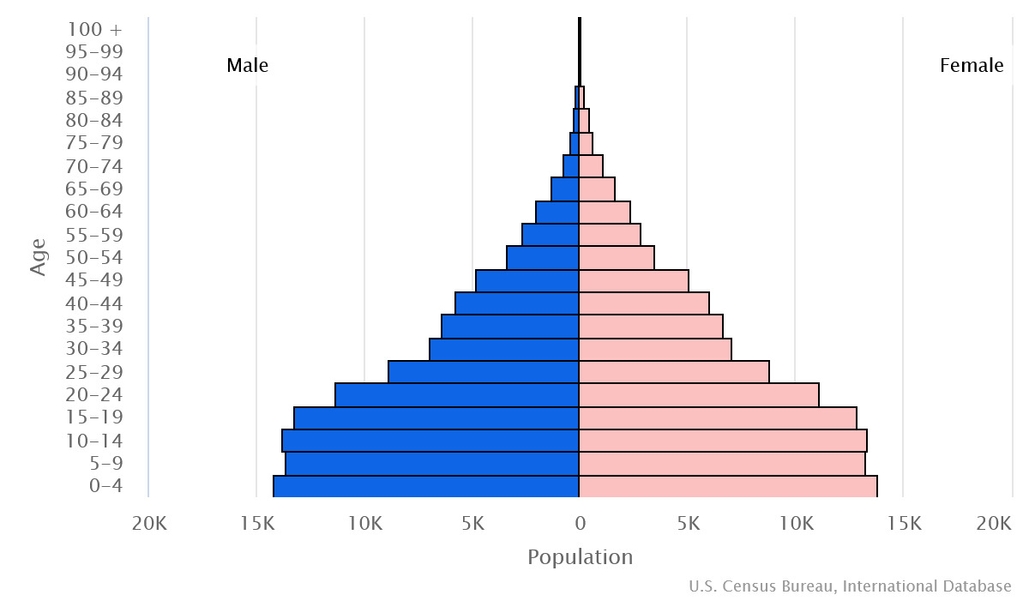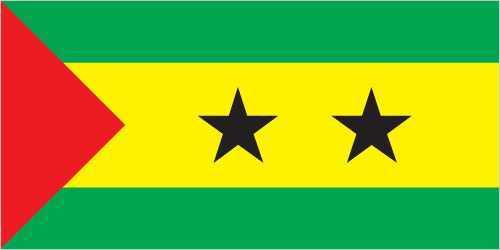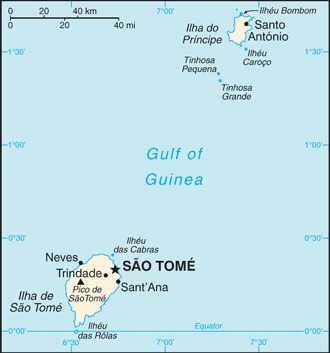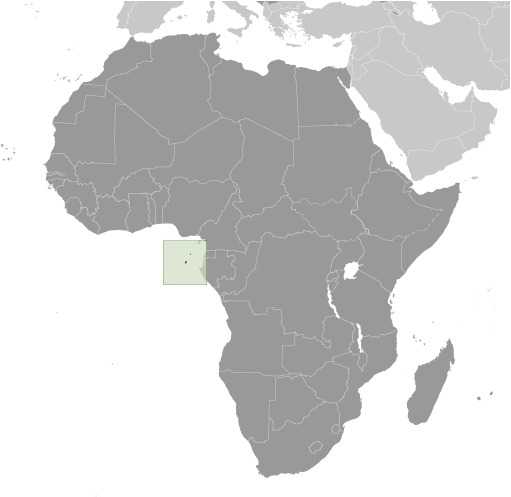Introduction
Background
Portugal discovered and colonized the uninhabited islands in the late 15th century, setting up a sugar-based economy that gave way to coffee and cocoa in the 19th century - all grown with African plantation slave labor, a form of which lingered into the 20th century. While independence was achieved in 1975, democratic reforms were not instituted until the late 1980s. The country held its first free elections in 1991, but frequent internal wrangling between the various political parties precipitated repeated changes in leadership and five failed, non-violent coup attempts in 1995, 1998, 2003, and 2009. In 2012, three opposition parties combined in a no confidence vote to bring down the majority government of former Prime Minister Patrice TROVOADA, but in 2014, legislative elections returned him to the office. President Evaristo CARVALHO, of the same political party as Prime Minister TROVOADA, was elected in September 2016, marking a rare instance in which the positions of president and prime minister were held by the same party. Prime Minister TROVOADA resigned at the end of 2018 and was replaced by Jorge BOM JESUS. Carlos Vila NOVA was elected president in September 2021 and was inaugurated early the following month. TROVOADA began his fourth stint as prime minister in November 2022, following his party's victory in legislative elections held in September of that year.
Visit the Definitions and Notes page to view a description of each topic.
Geography
Location
Central Africa, islands in the Gulf of Guinea, just north of the Equator, west of Gabon
Geographic coordinates
1 00 N, 7 00 E
Map references
Africa
Area - comparative
more than five times the size of Washington, DC
Land boundaries
total: 0 km
Coastline
209 km
Maritime claims
territorial sea: 12 nm
exclusive economic zone: 200 nm
measured from claimed archipelagic baselines
Climate
tropical; hot, humid; one rainy season (October to May)
Terrain
volcanic, mountainous
Elevation
highest point: Pico de Sao Tome 2,024 m
lowest point: Atlantic Ocean 0 m
Natural resources
fish, hydropower
Land use
agricultural land: 50.7% (2018 est.)
arable land: 9.1% (2018 est.)
permanent crops: 40.6% (2018 est.)
permanent pasture: 1% (2018 est.)
forest: 28.1% (2018 est.)
other: 21.2% (2018 est.)
Irrigated land
100 sq km (2012)
Population distribution
Sao Tome, the capital city, has roughly a quarter of the nation's population; Santo Antonio is the largest town on Principe; the northern areas of both islands have the highest population densities as shown in this population distribution map
Natural hazards
flooding
Geography - note
the second-smallest African country (after the Seychelles); the two main islands form part of a chain of extinct volcanoes and both are mountainous
People and Society
Population
total: 223,561
male: 111,553
female: 112,008 (2024 est.)
comparison rankings: female 183; male 183; total 183
Nationality
noun: Sao Tomean(s)
adjective: Sao Tomean
Ethnic groups
Mestico, Angolares (descendants of Angolan slaves), Forros (descendants of freed slaves), Servicais (contract laborers from Angola, Mozambique, and Cabo Verde), Tongas (children of servicais born on the islands), Europeans (primarily Portuguese), Asians (mostly Chinese)
Languages
Portuguese 98.4% (official), Forro 36.2%, Cabo Verdian 8.5%, French 6.8%, Angolar 6.6%, English 4.9%, Lunguie 1%, other (including sign language) 2.4%; note - shares sum to more than 100% because some respondents gave more than one answer on the census; other Portuguese-based Creoles are also spoken (2012 est.)
Religions
Catholic 55.7%, Adventist 4.1%, Assembly of God 3.4%, New Apostolic 2.9%, Mana 2.3%, Universal Kingdom of God 2%, Jehovah's Witness 1.2%, other 6.2%, none 21.2%, unspecified 1% (2012 est.)
Demographic profile
Sao Tome and Principe’s youthful age structure – more than 60% of the population is under the age of 25 as of 2020 – and high fertility rate ensure future population growth. Although Sao Tome has a net negative international migration rate, emigration is not a sufficient safety valve to reduce already high levels of unemployment and poverty. While literacy and primary school attendance have improved in recent years, Sao Tome still struggles to improve its educational quality and to increase its secondary school completion rate. Despite some improvements in education and access to healthcare, Sao Tome and Principe has much to do to decrease its high poverty rate, create jobs, and increase its economic growth.
The population of Sao Tome and Principe descends primarily from the islands’ colonial Portuguese settlers, who first arrived in the late 15th century, and the much larger number of African slaves brought in for sugar production and the slave trade. For about 100 years after the abolition of slavery in 1876, the population was further shaped by the widespread use of imported unskilled contract laborers from Portugal’s other African colonies, who worked on coffee and cocoa plantations. In the first decades after abolition, most workers were brought from Angola under a system similar to slavery. While Angolan laborers were technically free, they were forced or coerced into long contracts that were automatically renewed and extended to their children. Other contract workers from Mozambique and famine-stricken Cape Verde first arrived in the early 20th century under short-term contracts and had the option of repatriation, although some chose to remain in Sao Tome and Principe.
Today’s Sao Tomean population consists of mesticos (creole descendants of the European immigrants and African slaves that first inhabited the islands), forros (descendants of freed African slaves), angolares (descendants of runaway African slaves that formed a community in the south of Sao Tome Island and today are fishermen), servicais (contract laborers from Angola, Mozambique, and Cape Verde), tongas (locally born children of contract laborers), and lesser numbers of Europeans and Asians.
Age structure
0-14 years: 36.4% (male 41,337/female 40,106)
15-64 years: 60.3% (male 67,101/female 67,775)
65 years and over: 3.2% (2024 est.) (male 3,115/female 4,127)

Dependency ratios
total dependency ratio: 77.9
youth dependency ratio: 71.2
elderly dependency ratio: 6.7
potential support ratio: 14.9 (2021 est.)
Median age
total: 20.8 years (2024 est.)
male: 20.4 years
female: 21.2 years
comparison ranking: total 197
Population distribution
Sao Tome, the capital city, has roughly a quarter of the nation's population; Santo Antonio is the largest town on Principe; the northern areas of both islands have the highest population densities as shown in this population distribution map
Urbanization
urban population: 76.4% of total population (2023)
rate of urbanization: 2.96% annual rate of change (2020-25 est.)
Major urban areas - population
80,000 SAO TOME (capital) (2018)
Sex ratio
at birth: 1.03 male(s)/female
0-14 years: 1.03 male(s)/female
15-64 years: 0.99 male(s)/female
65 years and over: 0.75 male(s)/female
total population: 1 male(s)/female (2024 est.)
Mother's mean age at first birth
19.4 years (2008/09 est.)
note: data represents median age at first birth among women 25-29
Infant mortality rate
total: 42.6 deaths/1,000 live births (2024 est.)
male: 46.1 deaths/1,000 live births
female: 39 deaths/1,000 live births
comparison ranking: total 27
Life expectancy at birth
total population: 67.7 years (2024 est.)
male: 66 years
female: 69.4 years
comparison ranking: total population 195
Gross reproduction rate
1.63 (2024 est.)
Contraceptive prevalence rate
49.7% (2019)
Drinking water source
improved: urban: 100% of population
rural: 94% of population
total: 98.5% of population
unimproved: urban: 0% of population
rural: 6% of population
total: 1.5% of population (2020 est.)
Current health expenditure
4.9% of GDP (2020)
Physicians density
0.49 physicians/1,000 population (2019)
Hospital bed density
2.9 beds/1,000 population (2011)
Sanitation facility access
improved: urban: 57.1% of population
rural: 42.8% of population
total: 53.4% of population
unimproved: urban: 42.9% of population
rural: 57.2% of population
total: 46.6% of population (2020 est.)
Major infectious diseases
degree of risk: high (2023)
food or waterborne diseases: bacterial diarrhea, hepatitis A, and typhoid fever
vectorborne diseases: malaria, dengue fever, and sexually transmitted diseases: hepatitis B (2024)
water contact diseases: schistosomiasis
Alcohol consumption per capita
total: 4.23 liters of pure alcohol (2019 est.)
beer: 0.42 liters of pure alcohol (2019 est.)
wine: 3.58 liters of pure alcohol (2019 est.)
spirits: 0.23 liters of pure alcohol (2019 est.)
other alcohols: 0 liters of pure alcohol (2019 est.)
comparison ranking: total 92
Tobacco use
total: 5.7% (2020 est.)
male: 10.1% (2020 est.)
female: 1.3% (2020 est.)
comparison ranking: total 159
Currently married women (ages 15-49)
51.9% (2023 est.)
Child marriage
women married by age 15: 5.4%
women married by age 18: 28%
men married by age 18: 3.1% (2019 est.)
Literacy
definition: age 15 and over can read and write
total population: 94.8%
male: 96.5%
female: 91.1% (2021)
School life expectancy (primary to tertiary education)
total: 12 years
male: 12 years
female: 13 years (2015)
Environment
Environment - current issues
deforestation and illegal logging; soil erosion and exhaustion; inadequate sewage treatment in cities; biodiversity preservation
Environment - international agreements
party to: Biodiversity, Climate Change, Climate Change-Kyoto Protocol, Climate Change-Paris Agreement, Desertification, Endangered Species, Environmental Modification, Hazardous Wastes, Law of the Sea, Ozone Layer Protection, Ship Pollution, Wetlands, Whaling
signed, but not ratified: Comprehensive Nuclear Test Ban
Climate
tropical; hot, humid; one rainy season (October to May)
Land use
agricultural land: 50.7% (2018 est.)
arable land: 9.1% (2018 est.)
permanent crops: 40.6% (2018 est.)
permanent pasture: 1% (2018 est.)
forest: 28.1% (2018 est.)
other: 21.2% (2018 est.)
Urbanization
urban population: 76.4% of total population (2023)
rate of urbanization: 2.96% annual rate of change (2020-25 est.)
Air pollutants
particulate matter emissions: 33.75 micrograms per cubic meter (2019 est.)
carbon dioxide emissions: 0.12 megatons (2016 est.)
methane emissions: 0.04 megatons (2020 est.)
Waste and recycling
municipal solid waste generated annually: 25,587 tons (2014 est.)
Total water withdrawal
municipal: 10 million cubic meters (2020 est.)
industrial: 600,000 cubic meters (2017 est.)
agricultural: 30 million cubic meters (2020 est.)
Total renewable water resources
2.18 billion cubic meters (2020 est.)
Government
Country name
conventional long form: Democratic Republic of Sao Tome and Principe
conventional short form: Sao Tome and Principe
local long form: Republica Democratica de Sao Tome e Principe
local short form: Sao Tome e Principe
etymology: Sao Tome was named after Saint THOMAS the Apostle by the Portuguese who discovered the island on 21 December 1470 (or 1471), the saint's feast day; Principe is a shortening of the original Portuguese name of "Ilha do Principe" (Isle of the Prince) referring to the Prince of Portugal to whom duties on the island's sugar crop were paid
Government type
semi-presidential republic
Capital
name: Sao Tome
geographic coordinates: 0 20 N, 6 44 E
time difference: UTC 0 (5 hours ahead of Washington, DC, during Standard Time)
etymology: named after Saint Thomas the Apostle
Administrative divisions
6 districts (distritos, singular - distrito), 1 autonomous region* (regiao autonoma); Agua Grande, Cantagalo, Caue, Lemba, Lobata, Me-Zochi, Principe*
Independence
12 July 1975 (from Portugal)
National holiday
Independence Day, 12 July (1975)
Constitution
history: approved 5 November 1975
amendments: proposed by the National Assembly; passage requires two-thirds majority vote by the Assembly; the Assembly can propose to the president of the republic that an amendment be submitted to a referendum; revised several times, last in 2006
Legal system
mixed legal system of civil law based on the Portuguese model and customary law
International law organization participation
has not submitted an ICJ jurisdiction declaration; non-party state to the ICCt
Citizenship
citizenship by birth: no
citizenship by descent only: at least one parent must be a citizen of Sao Tome and Principe
dual citizenship recognized: no
residency requirement for naturalization: 5 years
Suffrage
18 years of age; universal
Executive branch
chief of state: President Carlos Manuel VILA NOVA (since 2 October 2021)
head of government: Prime Minister Patrice TROVOADA (since 11 November 2022)
cabinet: Council of Ministers proposed by the prime minister, appointed by the president
elections/appointments: president directly elected by absolute majority popular vote in 2 rounds if needed for a 5-year term (eligible for a second term); election last held on 18 July 2021 with a runoff on 5 September 2021 (next to be held in 2026); prime minister chosen by the National Assembly and approved by the president
election results:
2021: Carlos Manuel VILA NOVA elected president in the second round; percent of vote in the first round - Carlos Manuel VILA NOVA (IDA) 39.5%; Guilherme POSSER DA COSTA (MLSTP-PSD) 20.8%; Delfim NEVES (PCD-GR) 16.9%; Abel BOM JESUS (independent) 3.6%; Maria DAS NEVES (independent) 3.3%; other 15.9%; percent of the vote in second round - Carlos Manuel VILA NOVA 57.5%, Guilherme POSSER DA COSTA 42.5%
2016: Evaristo CARVALHO elected president; percent of vote - Evaristo CARVALHO (ADI) 49.8%, Manuel Pinto DA COSTA (independent) 24.8%, Maria DAS NEVES (MLSTP-PSD) 24.1%; note - first round results for CARVALHO were revised downward from just over 50%, prompting the 7 August runoff; however, on 1 August 2016 DA COSTA withdrew from the runoff, citing voting irregularities, and Evaristo CARVALHO was declared the winner
Legislative branch
description: unicameral National Assembly or Assembleia Nacional (55 seats; members directly elected in multi-seat constituencies by closed party-list proportional representation vote to serve 4-year terms)
elections: last held on 25 September 2022 (next to be held 30 September 2026)
election results: percent of vote by party - ADI 46.8%, MLSTP-PSD 32.7%, MCI-PS-PUN 6.6%, BASTA Movement 8.8%, other 5.1%; seats by party - ADI 30, MLSTP-PSD 18, MCI-PS-PUN 5, BASTA Movement 2; composition - men 47, women 8, percentage women 14.6%
Judicial branch
highest court(s): Supreme Court or Supremo Tribunal Justica (consists of 5 judges); Constitutional Court or Tribunal Constitucional (consists of 5 judges, 3 of whom are from the Supreme Court)
judge selection and term of office: Supreme Court judges appointed by the National Assembly; judge tenure NA; Constitutional Court judges nominated by the president and elected by the National Assembly for 5-year terms
subordinate courts: Court of First Instance; Audit Court
Political parties and leaders
BASTA Movement [Salvador RAMOS]
Independent Democratic Action or ADI [Patrice TROVADA]
Movement for the Liberation of Sao Tome and Principe-Social Democratic Party or MLSTP-PSD [Jorge Lopes Bom JESUS]
Movement of Independent Citizens of São Tomé and Príncipe - Socialist Party or MCI-PS [António Monteiro]
National Unity Party or PUN
International organization participation
ACP, AfDB, AOSIS, AU, CD, CEMAC, CPLP, EITI (candidate country), FAO, G-77, IBRD, ICAO, ICRM, IDA, IFAD, IFC, IFRCS, ILO, IMF, IMO, Interpol, IOC, IOM (observer), IPU, ITU, ITUC (NGOs), MIGA, NAM, OIF, OPCW, PCA, UN, UNCTAD, UNESCO, UNIDO, Union Latina, UNWTO, UPU, WCO, WHO, WIPO, WMO, WTO (observer)
Diplomatic representation in the US
chief of mission: Ambassador (vacant)
chancery: 122 East 42nd Street, Suite 1604
New York, NY 101168
telephone: [1] (212) 317-0533
FAX: [1] (212) 317-0580
email address and website:
stp1@attglobal.net
Sao Tome and Principe Permanent Mission to the United Nations
Diplomatic representation from the US
embassy: the US does not have an embassy in Sao Tome and Principe; the US Ambassador to Angola is accredited to Sao Tome and Principe
mailing address: 2290 Sao Tome Place, Washington DC 20521-2290
Flag description
three horizontal bands of green (top), yellow (double width), and green with two black five-pointed stars placed side by side in the center of the yellow band and a red isosceles triangle based on the hoist side; green stands for the country's rich vegetation, red recalls the struggle for independence, and yellow represents cocoa, one of the country's main agricultural products; the two stars symbolize the two main islands
note: uses the popular Pan-African colors of Ethiopia
National symbol(s)
palm tree; national colors: green, yellow, red, black
National anthem
name: "Independencia total" (Total Independence)
lyrics/music: Alda Neves DA GRACA do Espirito Santo/Manuel dos Santos Barreto de Sousa e ALMEIDA
note: adopted 1975
Economy
Economic overview
ower middle-income Central African island economy; falling cocoa production due to drought and mismanagement; joint oil venture with Nigeria; government owns 90% of land; high debt, partly from fuel subsidies; tourism gutted by COVID-19
Real GDP (purchasing power parity)
$781.928 million (2022 est.)
$781.418 million (2021 est.)
$766.853 million (2020 est.)
note: data in 2017 dollars
comparison ranking: 210
Real GDP growth rate
0.07% (2022 est.)
1.9% (2021 est.)
2.62% (2020 est.)
note: annual GDP % growth based on constant local currency
comparison ranking: 195
Real GDP per capita
$3,400 (2022 est.)
$3,500 (2021 est.)
$3,500 (2020 est.)
note: data in 2017 dollars
comparison ranking: 189
GDP (official exchange rate)
$542.687 million (2022 est.)
note: data in current dollars at official exchange rate
Inflation rate (consumer prices)
18.01% (2022 est.)
8.14% (2021 est.)
9.82% (2020 est.)
note: annual % change based on consumer prices
comparison ranking: 194
GDP - composition, by sector of origin
agriculture: 11.8% (2017 est.)
industry: 14.8% (2017 est.)
services: 73.4% (2017 est.)
comparison rankings: services 57; industry 183; agriculture 81
GDP - composition, by end use
household consumption: 81.4% (2017 est.)
government consumption: 17.6% (2017 est.)
investment in fixed capital: 33.4% (2017 est.)
investment in inventories: 0% (2017 est.)
exports of goods and services: 7.9% (2017 est.)
imports of goods and services: -40.4% (2017 est.)
Agricultural products
plantains, oil palm fruit, coconuts, taro, bananas, fruit, cocoa, yams, cassava, maize
Industries
light construction, textiles, soap, beer, fish processing, timber
Industrial production growth rate
6.59% (2022 est.)
note: annual % change in industrial value added based on constant local currency
comparison ranking: 46
Labor force
74,000 (2022 est.)
note: number of people ages 15 or older who are employed or seeking work
comparison ranking: 188
Unemployment rate
14.35% (2022 est.)
15.41% (2021 est.)
15.37% (2020 est.)
note: % of labor force seeking employment
comparison ranking: 190
Youth unemployment rate (ages 15-24)
total: 22.9% (2021 est.)
male: 18% NA
female: 34.3% NA
comparison ranking: total 71
Population below poverty line
55.5% (2017 est.)
note: % of population with income below national poverty line
Gini Index coefficient - distribution of family income
40.7 (2017 est.)
note: index (0-100) of income distribution; higher values represent greater inequality
comparison ranking: 51
Household income or consumption by percentage share
lowest 10%: 2.6% NA
highest 10%: 32.9% (2017 est.) NA
note: % share of income accruing to lowest and highest 10% of population
Remittances
1.42% of GDP (2022 est.)
2.02% of GDP (2021 est.)
1.83% of GDP (2020 est.)
note: personal transfers and compensation between resident and non-resident individuals/households/entities
Budget
revenues: $95 million (2019 est.)
expenditures: $102 million (2019 est.)
Fiscal year
calendar year
Current account balance
-$79.437 million (2022 est.)
-$95.248 million (2021 est.)
-$59.595 million (2020 est.)
note: balance of payments - net trade and primary/secondary income in current dollars
comparison ranking: 83
Exports
$96.977 million (2022 est.)
$75.256 million (2021 est.)
$49.337 million (2020 est.)
note: balance of payments - exports of goods and services in current dollars
comparison ranking: 212
Exports - partners
Singapore 30%, Switzerland 24%, France 11%, Poland 7%, Belgium 7%, United States 5% (2019)
Exports - commodities
gas turbines, cocoa beans, aircraft parts, iron products, chocolate (2019)
Imports
$219.322 million (2022 est.)
$201.145 million (2021 est.)
$160.097 million (2020 est.)
note: balance of payments - imports of goods and services in current dollars
comparison ranking: 210
Imports - partners
Portugal 41%, Angola 17%, China 8% (2019 )
Imports - commodities
refined petroleum, cars, rice, flavored water, postage stamps (2019)
Reserves of foreign exchange and gold
$48.607 million (2022 est.)
$75.017 million (2021 est.)
$75.288 million (2020 est.)
note: holdings of gold (year-end prices)/foreign exchange/special drawing rights in current dollars
comparison ranking: 194
Debt - external
$292.9 million (31 December 2017 est.)
$308.5 million (31 December 2016 est.)
comparison ranking: 184
Exchange rates
dobras (STD) per US dollar -
Exchange rates:
23.29 (2022 est.)
20.71 (2021 est.)
21.507 (2020 est.)
21.885 (2019 est.)
20.751 (2018 est.)
Energy
Electricity access
population without electricity: (2020) less than 1 million
electrification - total population: 78.4% (2021)
electrification - urban areas: 80% (2021)
electrification - rural areas: 73.7% (2021)
Electricity
installed generating capacity: 28,000 kW (2020 est.)
consumption: 78 million kWh (2019 est.)
exports: 0 kWh (2020 est.)
imports: 0 kWh (2020 est.)
transmission/distribution losses: 11.9 million kWh (2019 est.)
comparison rankings: imports 125; exports 105; installed generating capacity 201; transmission/distribution losses 21; consumption 198
Electricity generation sources
fossil fuels: 89.5% of total installed capacity (2020 est.)
nuclear: 0% of total installed capacity (2020 est.)
solar: 0% of total installed capacity (2020 est.)
wind: 0% of total installed capacity (2020 est.)
hydroelectricity: 10.5% of total installed capacity (2020 est.)
tide and wave: 0% of total installed capacity (2020 est.)
geothermal: 0% of total installed capacity (2020 est.)
biomass and waste: 0% of total installed capacity (2020 est.)
Coal
production: 0 metric tons (2020 est.)
consumption: 0 metric tons (2020 est.)
exports: 0 metric tons (2020 est.)
imports: 0 metric tons (2020 est.)
proven reserves: 0 metric tons (2019 est.)
Petroleum
total petroleum production: 0 bbl/day (2021 est.)
refined petroleum consumption: 1,200 bbl/day (2019 est.)
crude oil and lease condensate exports: 0 bbl/day (2018 est.)
crude oil and lease condensate imports: 0 bbl/day (2018 est.)
crude oil estimated reserves: 0 barrels (2021 est.)
Natural gas
production: 0 cubic meters (2021 est.)
consumption: 0 cubic meters (2021 est.)
exports: 0 cubic meters (2021 est.)
imports: 0 cubic meters (2021 est.)
proven reserves: 0 cubic meters (2021 est.)
Carbon dioxide emissions
173,000 metric tonnes of CO2 (2019 est.)
from coal and metallurgical coke: 0 metric tonnes of CO2 (2019 est.)
from petroleum and other liquids: 173,000 metric tonnes of CO2 (2019 est.)
from consumed natural gas: 0 metric tonnes of CO2 (2019 est.)
comparison ranking: total emissions 206
Communications
Telephones - fixed lines
total subscriptions: 2,501 (2022 est.)
subscriptions per 100 inhabitants: 1 (2022 est.)
comparison ranking: total subscriptions 212
Telephones - mobile cellular
total subscriptions: 197,318 (2022 est.)
subscriptions per 100 inhabitants: 87 (2022 est.)
comparison ranking: total subscriptions 184
Telecommunication systems
general assessment: local telephone network of adequate quality with most lines connected to digital switches; mobile cellular superior choice to landline; dial-up quality low; broadband expensive (2018)
domestic: fixed-line is 1 per 100 and mobile-cellular teledensity is 85 telephones per 100 persons (2021)
international: country code - 239; landing points for the Ultramar GE and ACE submarine cables from South Africa to over 20 West African countries and Europe; satellite earth station - 1 Intelsat (Atlantic Ocean) (2019)
Broadcast media
1 government-owned TV station; 2 government-owned radio stations; 7 independent local radio stations; transmissions of multiple international broadcasters are available
Internet users
total: 112,200 (2021 est.)
percent of population: 51% (2021 est.)
comparison ranking: total 185
Broadband - fixed subscriptions
total: 2,512 (2020 est.)
subscriptions per 100 inhabitants: 1 (2020 est.)
comparison ranking: total 197
Transportation
National air transport system
number of registered air carriers: 1 (2020)
inventory of registered aircraft operated by air carriers: 1
Merchant marine
total: 25 (2023)
by type: general cargo 15, oil tanker 4, other 6
comparison ranking: total 141
Ports and terminals
major seaport(s): Sao Tome
Military and Security
Military and security forces
Armed Forces of Sao Tome and Principe (Forcas Armadas de Sao Tome e Principe, FASTP): Army, Coast Guard of Sao Tome e Principe (Guarda Costeira de Sao Tome e Principe, GCSTP), Presidential Guard, National Guard (2023)
note: the Army and Coast Guard are responsible for external security while the public security police and judicial police maintain internal security; both the public security police and the military report to the Ministry of Defense and Internal Affairs; the judicial police report to the Ministry of Justice, Public Administration, and Human Rights
Military and security service personnel strengths
the FASTP has approximately 500 personnel (2023)
Military equipment inventories and acquisitions
the FASTP has a limited inventory of light weapons (2023)
Military service age and obligation
18 is the legal minimum age for compulsory military service (reportedly not enforced); 17 is the legal minimum age for voluntary service (2023)
Military - note
the FASTP is one of the smallest militaries in Africa and consists of only a few companies of ground troops and some small patrol boats (2023)


